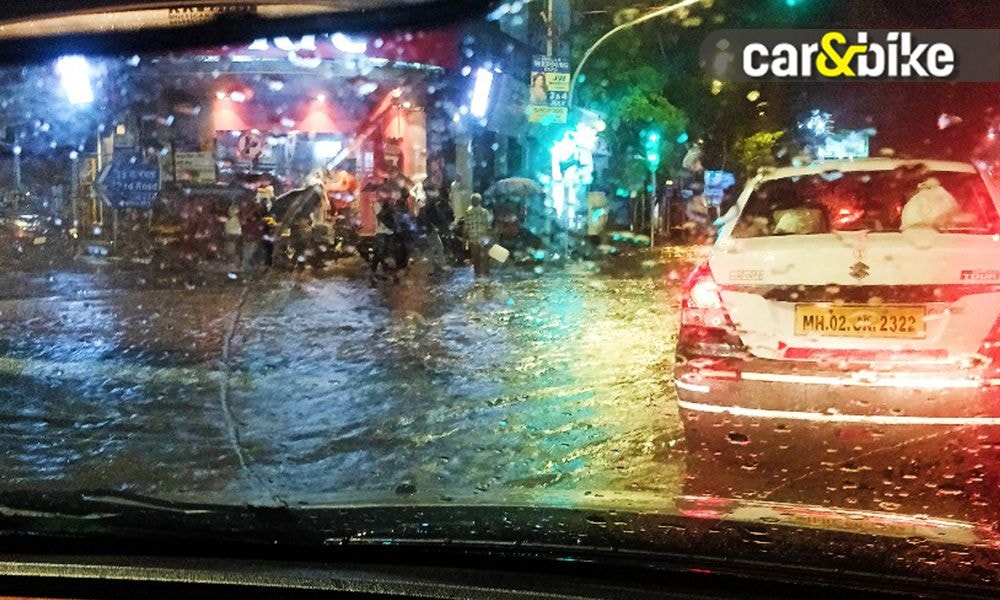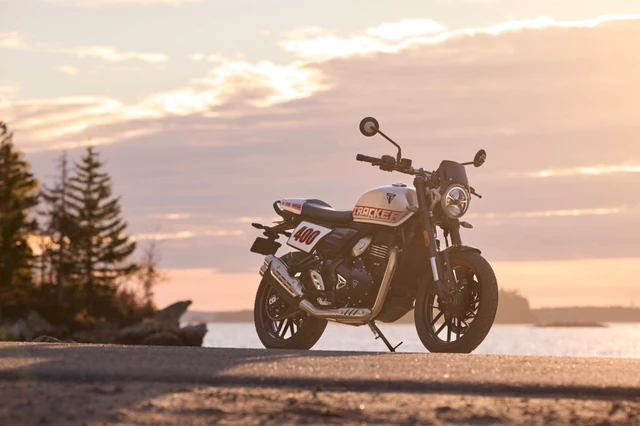Monsoon Car Care: 7 Things To Do When Your Car Is Stranded In Floods

- Avoid waterlogged as much as possible by opting for alternate routes
- Do not restart the engine if it it stops working when submerged
- Remove the excess water from the cabin and other areas at the earliest
The monsoon season is here and that means a lot of our roads will be prone to waterlogging and at times, flooding as well. Sometimes cities and towns do not have the necessary infrastructure to handle the rains, and at times, nature's fury overpowers the best manmade systems. Either way, it's best to be prepared when water levels cross the threshold so that you can keep yourselves safe and minimise the damage to your vehicle. Here are seven things you need to do if your vehicle gets stuck in floods or waterlogged roads during this monsoon season.
Also Read: 7 Essential Items To Carry In Your Car During The Monsoon Season
Your smartphone can be a lifesaver and help you take the best alternative route in case of heavy rainfall
Photo Credit: Pexels
1. Find an alternative route
We can't stress enough how much of our lives have been made simpler by GPS maps. In today's connected world, finding the best route to your destination is fairly easier. It will only help you avoid waterlogged roads and find the safest alternative instead. Make it a point to check the roads and alternative routes on the map before commencing your journey.
2. Go slow, keep calm
Let's say you did take the alternate route and are still stuck on waterlogged roads. In this case, you need to focus on getting yourself and the car home safe and sound. And to do that you need to minimise damage to the vehicle. Make sure to slow down and assess the road when travelling through waterlogged areas. On an unknown route, you wouldn't know where the potholes or exposed manholes are and that can increase your chances of getting stuck. Stick to the vehicle that's wading through the waterlogged road, which will give you a more reliable track to follow. At the same time, maintain a safe distance should you need to change lanes.
Also Read: How To Take Care Of Your Car Tyres During Monsoon?
Keep the revs a little over 1,000 rpm to smoothly cross a waterlogged road and do not crank the engine if it dies down while wading through deep water
3. Keep the engine running and the revs up
If you have to drive through waterlogged roads, please do so with revs a little up. When the exhaust is submerged under water, there are chances the water can get sucked into the engine and damage the pistons. This is called 'hydro lock' and can severely damage the engine. Remember, the goal is to reach your destination with minimum damage. In order to avoid hydro lock, keep the revs a little high while running the car in lower gears so the water does not seep into the exhaust.
Avoid cranking the engine and instead push the vehicle to a corner and in safety | Photo Credit: Unsplash
4. Do not crank the engine
If you do get into a situation where the engine seizes, do not try to crank it up again. You are only inviting more trouble and the engine will be further damaged. There's also the risk of damaging the wiring harness as well as other electrical components by forcing the car to start up. Instead, now would be a good time to push the vehicle to the side and call for roadside assistance or your trusted mechanic.
Also Read: Top 5 Important Car Care Tips For The Monsoon
Use towels, tissues and even newspapers to dry out the cabin or you can invest in a wet vacuum cleaner | Photo Credit: Pexels
5. Get as much water out as possible
Wading through waterlogged roads could mean that some of the water did enter the cabin and you need to get it out at the earliest. The best way to do it is to give the car to a professional cleaner who can remove the water out of the carpets, seats and other crevices. You can also use a thick towel to absorb the water or use a wet vacuum cleaner to dry out the cabin quickly. Remember, this is extremely important so that mildew and stench do not set into the cabin. You are also inviting rusting on the car. In most cases, there will be drainage plugs below the carpet that can be pulled out to drain the excess water.
6. Ventilation is the key
If the sun is on your side, please make the most of it and expose the cabin to it. Roll down the windows and ventilate the cabin so that it can dry up naturally. If you have a garage or a parking space with an electric connection, a table fan might just fasten the drying process. If the car is in running condition (and we hope the vehicle has been professionally inspected), crank up the heater, set the blower to the maximum speed and let the system do the trick.
Also Read: 5 Tips For Riding Two-Wheelers In The Monsoon
If your vehicle has been seized and is showing signs of damage, inform your car insurance provider at the earliest | Photo Credit: Pexels
7. Call your vehicle insurance provider
If all else fails, it's time to call the vehicle insurance company. Flooding is a common issue, so make sure your insurance is in place. The call centre service will guide you on the next steps to take a smoother process.
Trending News
 1 min readTriumph Tracker 400: In Pictures
1 min readTriumph Tracker 400: In Pictures 1 min readTriumph Tracker 400 Unveiled in UK
1 min readTriumph Tracker 400 Unveiled in UK
Latest News
 Janak Sorap | Dec 17, 2025Triumph Tracker 400: In PicturesTriumph has unveiled the new Tracker 400 based on the Speed 400. Here’s a quick look at the motorcycle in pictures.1 min read
Janak Sorap | Dec 17, 2025Triumph Tracker 400: In PicturesTriumph has unveiled the new Tracker 400 based on the Speed 400. Here’s a quick look at the motorcycle in pictures.1 min read Jaiveer Mehra | Dec 17, 2025Tata Sierra Smart Plus Revealed In Official Pictures: What Do You Get For Rs 11.49 Lakh?While nearly everyone has seen the Sierra in pictures and many in person at dealerships, you’ll likely only have seen the top models. But what is the base variant like?2 mins read
Jaiveer Mehra | Dec 17, 2025Tata Sierra Smart Plus Revealed In Official Pictures: What Do You Get For Rs 11.49 Lakh?While nearly everyone has seen the Sierra in pictures and many in person at dealerships, you’ll likely only have seen the top models. But what is the base variant like?2 mins read car&bike Team | Dec 17, 20252025 Ducati Panigale V2, Streetfighter V2 Recalled In The USThe recall states that two ABS fuses may have been inadvertently fitted in the wrong positions during wiring assembly and could increase the risk of a crash.3 mins read
car&bike Team | Dec 17, 20252025 Ducati Panigale V2, Streetfighter V2 Recalled In The USThe recall states that two ABS fuses may have been inadvertently fitted in the wrong positions during wiring assembly and could increase the risk of a crash.3 mins read Jafar Rizvi | Dec 17, 2025Updated Bajaj Pulsar 220F Does Not Get Dual-Channel ABS; Company Issues ClarificationBajaj Auto has confirmed that the updated Pulsar 220F does not feature dual-channel ABS, contradicting earlier reports.1 min read
Jafar Rizvi | Dec 17, 2025Updated Bajaj Pulsar 220F Does Not Get Dual-Channel ABS; Company Issues ClarificationBajaj Auto has confirmed that the updated Pulsar 220F does not feature dual-channel ABS, contradicting earlier reports.1 min read Janak Sorap | Dec 16, 2025Triumph Tracker 400 Unveiled in UKBased on the Speed 400’s platform with the tune from the Thruxton 400.1 min read
Janak Sorap | Dec 16, 2025Triumph Tracker 400 Unveiled in UKBased on the Speed 400’s platform with the tune from the Thruxton 400.1 min read car&bike Team | Dec 16, 2025Kawasaki Versys-X 300 Offered With Rs 25,000 DiscountAfter the discount, the entry-level Kawasaki Adventurer tourer is priced at Rs 3.24 lakh (ex-showroom).3 mins read
car&bike Team | Dec 16, 2025Kawasaki Versys-X 300 Offered With Rs 25,000 DiscountAfter the discount, the entry-level Kawasaki Adventurer tourer is priced at Rs 3.24 lakh (ex-showroom).3 mins read
 Janak Sorap | Dec 11, 2025Harley-Davidson X440 T First Ride Review: Smarter and SharperHarley-Davidson has taken the X440 and given it a more focused and engaging twist. The result is the X440 T—essentially the same platform but updated in areas that give the motorcycle more appeal and riders more thrill.5 mins read
Janak Sorap | Dec 11, 2025Harley-Davidson X440 T First Ride Review: Smarter and SharperHarley-Davidson has taken the X440 and given it a more focused and engaging twist. The result is the X440 T—essentially the same platform but updated in areas that give the motorcycle more appeal and riders more thrill.5 mins read Shams Raza Naqvi | Dec 10, 20252025 Mini Cooper Convertible Review: More Colour On Indian RoadsThe updated Mini Cooper Convertible is set to be launched in the Indian market in the next few days. We drive it around Jaisalmer for a quick review.1 min read
Shams Raza Naqvi | Dec 10, 20252025 Mini Cooper Convertible Review: More Colour On Indian RoadsThe updated Mini Cooper Convertible is set to be launched in the Indian market in the next few days. We drive it around Jaisalmer for a quick review.1 min read Bilal Firfiray | Dec 8, 2025Tata Sierra Review: India’s New Favourite?Marking its return after a few decades, the reborn Sierra has made everyone sit up and take notice. But is it worth the hype?10 mins read
Bilal Firfiray | Dec 8, 2025Tata Sierra Review: India’s New Favourite?Marking its return after a few decades, the reborn Sierra has made everyone sit up and take notice. But is it worth the hype?10 mins read Girish Karkera | Dec 4, 20252026 Honda Prelude First Drive: Domesticated Civic Type RA sporty-looking coupe built to give customers a taste of performance but not at the expense of everyday practicality.5 mins read
Girish Karkera | Dec 4, 20252026 Honda Prelude First Drive: Domesticated Civic Type RA sporty-looking coupe built to give customers a taste of performance but not at the expense of everyday practicality.5 mins read Seshan Vijayraghvan | Nov 29, 2025Mahindra XEV 9S First Drive Review: Big Electric SUV, Bigger ExpectationsThe XEV 9S lands at a time when the EV crowd is growing fast. It’s a big, born-electric, three-row SUV that starts under 20 lakh. It sits close to the XUV700 in size, but the brief is very different. Here’s what it’s like on the road.11 mins read
Seshan Vijayraghvan | Nov 29, 2025Mahindra XEV 9S First Drive Review: Big Electric SUV, Bigger ExpectationsThe XEV 9S lands at a time when the EV crowd is growing fast. It’s a big, born-electric, three-row SUV that starts under 20 lakh. It sits close to the XUV700 in size, but the brief is very different. Here’s what it’s like on the road.11 mins read































































































































